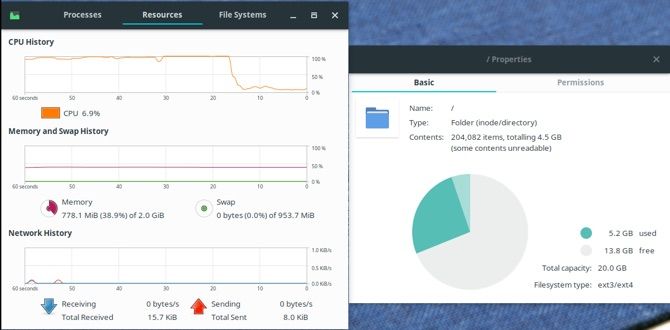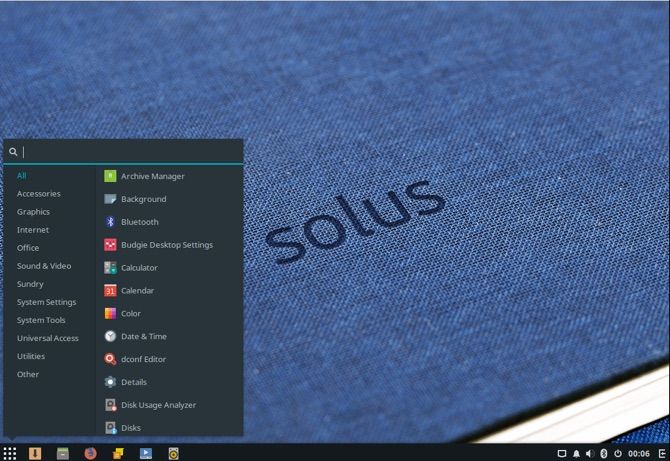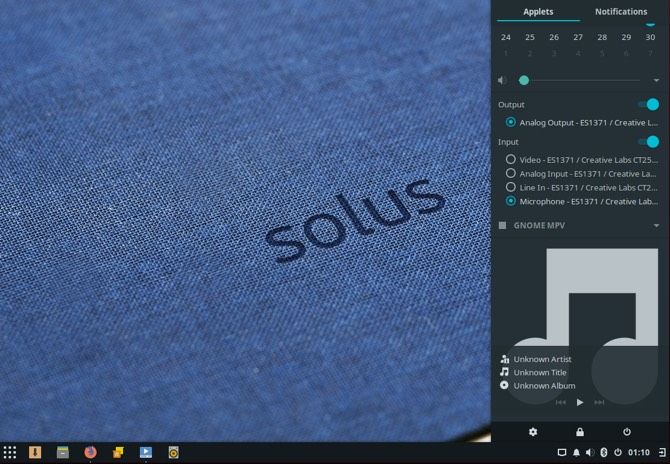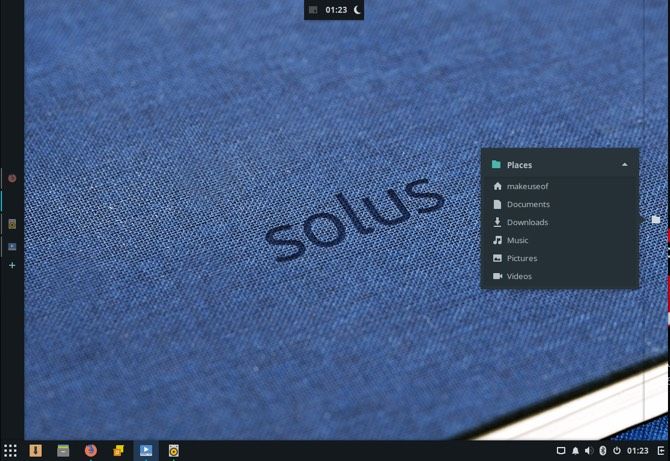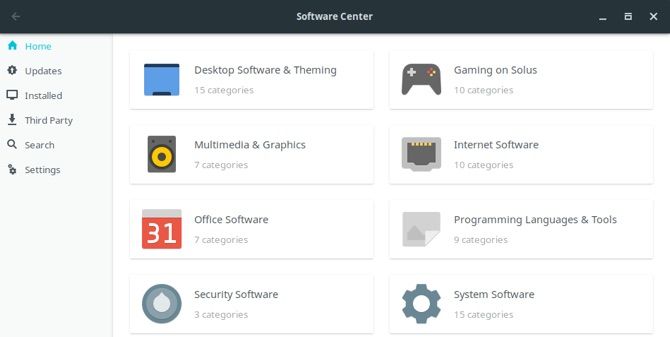There are a multitude of Linux operating systems to choose from. Spin-offs, clones and distributions (another word for "operating systems") based on other distributions. One example is Linux Mint, which is based on Ubuntu, which in turn is based on Debian.
But not all distros are based on other versions of Linux. One example is Solus, an independent distribution that has been gaining traction lately. Its target audience is the everyday home user, and it delivers user-friendly experience. Let's find out why Solus might be a candidate for your new daily driver.
The Solus Mantra
"Less is more," which can be traced back to 19th century poetry, is the notion that simplicity and clarity lead to good design. This mantra is echoed throughout Solus. This may have even been a design consideration for the OS. Solus is built entirely from the ground up. There is no mention of an OS being a base for their own. While this approach may seem a little unusual or uncommon, it does give the Solus team a blank canvas to work with.
Now this isn't an apparition that has decided to miraculously appear, Solus is based on Solus OS which began as a Debian derivative. Unfortunately due to lack of manpower, Solus OS was abandoned in 2013 to only to be revived as the Solus Project with its own roots and no basis on another distro. All of the flavors of Solus aren't flaming balls of glitter with jet engines and rocket flares. While that does sound awesome, Solus is designed to be user friendly, but minimalist. You will find a clean, well designed desktop experience that adorns a flat modern look.
The Choices
There are currently three flavors of Solus to choose from, centered around the desktop environment that dresses it:
- Solus MATE which is geared towards advanced users and older hardware. (A 64-bit processor is required, so consider this for older hardware.)
- Solus GNOME, which as you'll expect features the GNOME shell.
- Lastly, Solus Budgie, which is touted as the flagship product by Solus.
We're going to look at Solus Budgie in detail below.
The Solus Footprint
The base install of Solus Budgie comes in at a cool 5.2GB and RAM usage stabilizing at around 780MB. Relative to a distro like KDE Plasma which reports 9.3GB and 590MB for disk and RAM respectively, the RAM usage does seem a shade on the high side. Daily usage, however, revealed it to be indifferent from other distros in terms of speed, and sometimes even a little quicker.
Having the install only taking up 5.2GB may not seem like a big deal, however it's a sign of a lean machine. The leaner your machine can be, the better. Solus comes pre-installed with everyday items that are common to the average user. There is Firefox, Thunderbird, MPV and Libre Office. The approach on keeping the distribution free of applications you will never use is a wise, flexible one. As a result, this gives you the opportunity to just install what you need while keeping your computer free from bloatware.
The User Interface
If your checklist includes a modern user interface (UI), lightweight feel, and frequent updates, Budgie has you covered. The flat icons, clean theme and animations make for a truly beautiful desktop experience. Everything just seems to be right where you left it. Regardless of the operating system (OS) you are coming from, Budgie will be easy for anyone to get comfortable with. The experience is well thought out and is accompanied by a healthy serving of customization.
Another welcome default is the notifications panel or Raven Sidebar. Once it slides out it provides some quick controls and ensures you don't miss anything important. You can take a quick peak at your calendar, volume control, music and audio controls and many other useful widgets. Raven is a seamless system that has an edge over efforts by other distros to provide similar features as well as being exclusive to Budgie.
Panels and Applets
To give the the most bang for your buck when it comes to real estate, panels can be placed on all four sides of your screen. While this is a subjective choice, it is a choice none the less. The included applets can be extremely powerful and useful. Some of the noteworthy mentions include:
- Night Light which has a blue light filter to reduce eye strain.
- A workspace switcher to quickly jump between workspaces, and places for navigating your home folder.
- Panels have various display modes including autohide and dock.
The dock mode is automatically sized by the number of running applets This ensures your invaluable real estate is maximized exactly to your needs.
Applications
There was a stage where Solus may have been afflicted with a similar problem that other new distributions fall short: software availability. Solus has chosen to go with the eopkg (formerly PiSi) package manager. Relative to the package managers found on veteran distributions, eopkg is brand new.
There is a Software Center which is sorted into categories, and then further sorted according to the flavor of Solus that you've chosen. If you prefer to install application via command line, eopkg mirrors the syntax of apt-get (mostly). However, the usual RPM and DEB installers are not going to be compatible with Solus.
This also means your software center isn't going to be totally flooded with applications. As it gains popularity and attracts the right crowd, applications will be widely adapted and available. Starting a new distribution and package manager from scratch will come with this trade-off. This a challenge that the Solus community has taken head on. The basic packages you'd need for your typical desktop use -- web browsing, screen recording, image editing, music players, common utilities and system settings -- are all present with numerous options for each.
Distro Diversity
Taking things back to the drawing board is no easy task. It does however allow the developers to see things with a clear mind and try and start on the right foot. The upcoming announcements and steady growth are also promising signs, including .NET Core running on Solus, which could be huge for software developers. Solus looks to have catapulted itself into a plausible candidate for being an everyday users' daily driver.
What distribution are you currently using? How often do you try out a new distribution? What things do you look for in a possible flavour of Linux? Let us know in the comments below!
Image Credit: erryan/Depositphotos


